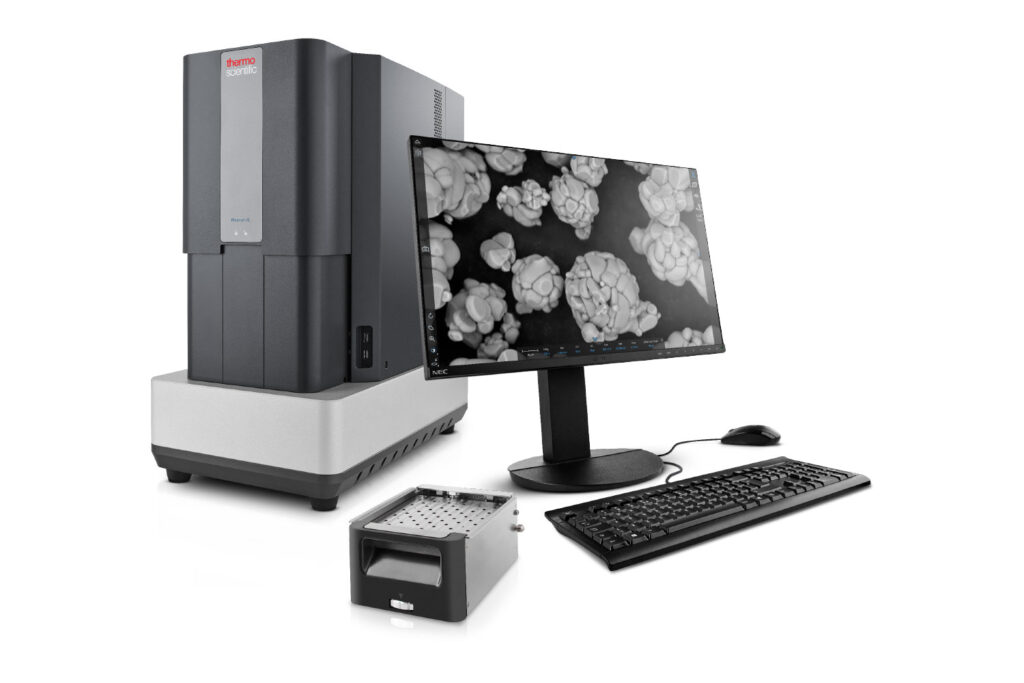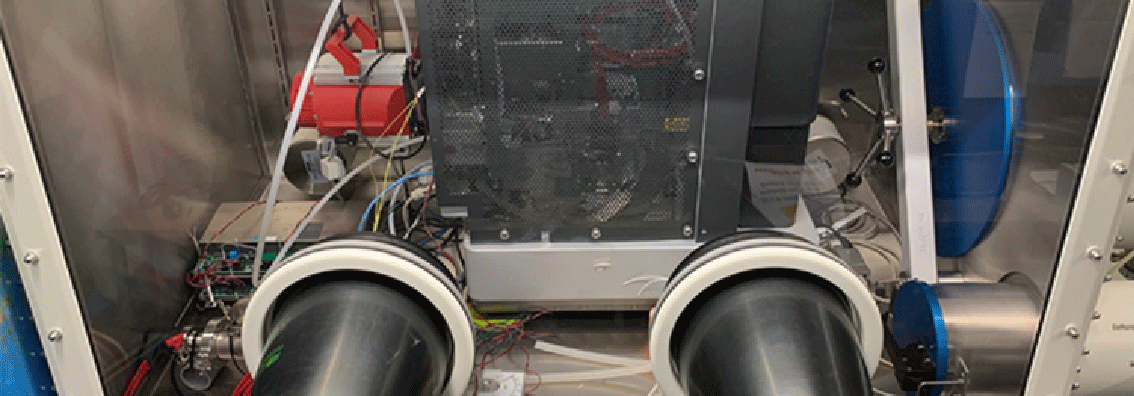In fact, these solid-state batteries solve two problems:
- Provide higher density
- Provide a safer and more reliable product
The main challenge in the characterization of lithium-ion batteries is that lithium is highly reactive in air. In solid-state battery research and development, the sample must be protected from environmental influences to prevent reactions both during preparation and analysis. An argon environment prevents lithium from reacting with oxygen, nitrogen and/or water, thus avoiding potential hazards.
Thermo Scientific Phenom™ XL G2 benchtop SEM – The Solution
The Thermo Scientific Phenom™ XL G2 benchtop SEM in argon conversion is the only scanning electron microscope that can be placed in an argon-filled glovebox for the analysis of air-sensitive lithium battery samples.
When the sample is transferred from the glovebox to the SEM on the workbench, it is usually affected by substances such as water, oxygen or nitrogen. Available solutions, such as a vacuum sample transfer system, are expensive, complex and do not adequately protect the sample.
In contrast, using the SEMin the glovebox makes the workflow faster, since both the sample and the microscope are in the same environment. Although lithium does not react in contact with argon, analysis in an environment filled with this gas poses a challenge.
A scanning electron microscope applies a voltage of about 15,000 volts (or even higher). Using such a high voltage in an argon-filled environment can, without proper precautions, cause discharges that can damage the electronic components in the SEM.
The Thermo Scientific Phenom XL G2 Argon Compatible uses special technology to circumvent this problem and provide a protected environment for characterizing air-sensitive samples.
Thermo Scientific Phenom XL G2 SEM Argon compatible – The benefits






